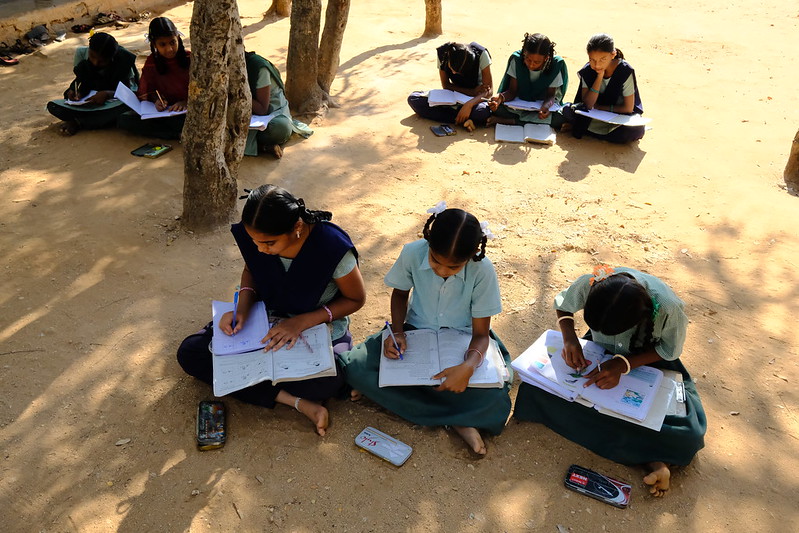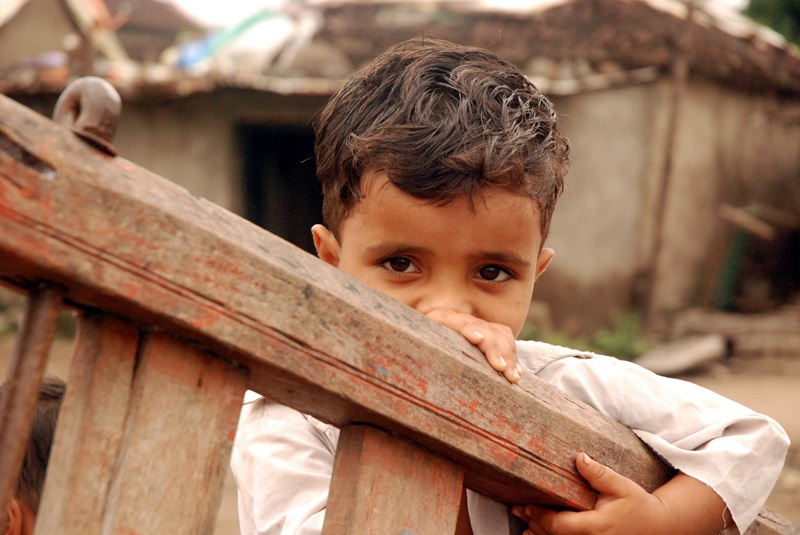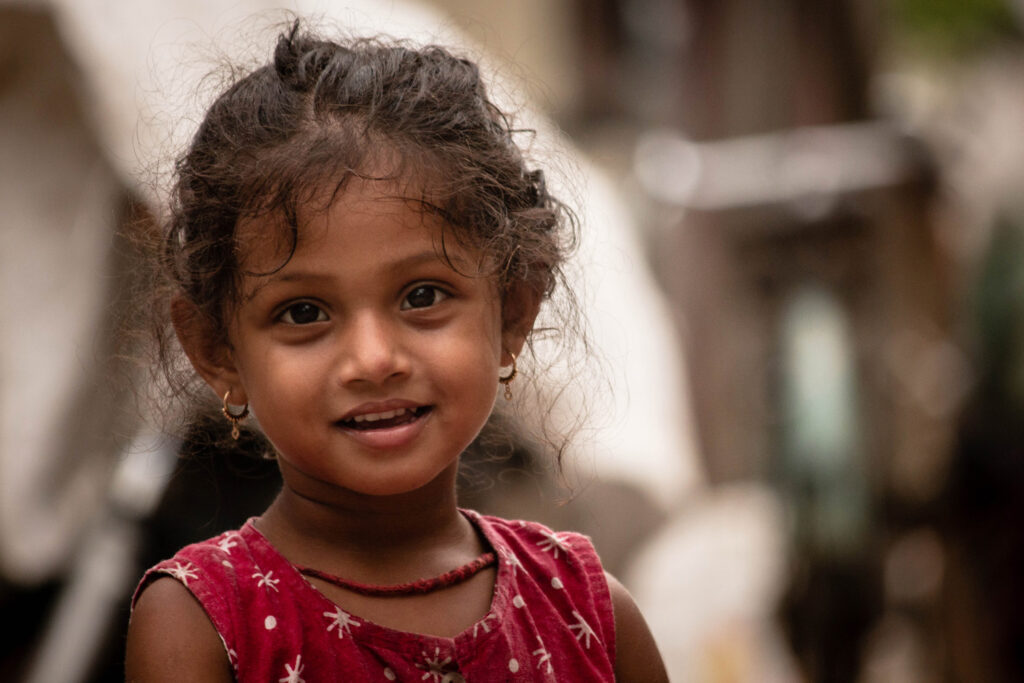
Gender Inequality in India – Causes & Solutions
Gender inequality has been a crucial social issue in India for centuries. Census 2011 shows the child sex ratio among children of 0-6 years to be....
Read MoreChild trafficking is a horrific crime that steals the innocence and future of millions of children worldwide. It takes them from their families and communities, and leads them into labour, exploitation, and unimaginable suffering.
Moreover, these victims are trapped in a cycle of exploitation, pushed into labour, sexual abuse, or domestic servitude – a living nightmare from which escape seems impossible.
But you can be part of the solution. By taking action and adopting a proactive approach, we can disrupt the vicious cycle of child trafficking and create a safer world for every child. And in this article, we present eight practical ways to stop child trafficking. Read along!

Child trafficking is an exploitation of children’s innocence, safety, and basic human rights. It is a global issue that affects countless young lives, subjecting them to various forms of abuse, including sexual exploitation, child labour, domestic servitude, and criminal activities.
The way these traffickers operate is sneaky – they exploit children, families, and communities by taking advantage of their trust and vulnerabilities. Sometimes, traffickers may also offer families a better life elsewhere or threaten them with violence.
In India, the gravity of the situation is more severe. According to the National Crime Records Bureau, there were approximately 2088 cases of child trafficking reported in 2019, with a staggering 95% involving internal trafficking within the country's borders (source: U.S. Department of State, 2021).
However, these official figures may not fully capture the extent of the problem, as many victims do not report their cases due to fear or lack of awareness. Non-governmental organisations estimate that between 12,000 and 50,000 women and children are trafficked into India annually from neighbouring nations, fueling a thriving sex trade industry (source: library.cityvision.edu).
The victims of child trafficking often do not understand that they are being abused, especially if they have been groomed or manipulated into believing they are in a relationship with their abuser. This can leave a long-lasting impact on them, including deep physical, emotional, and psychological scars.
Moreover, captivity, poor living conditions, and exploitation can have severe impacts on a child's mental and physical health, including:
Child trafficking is a horrific reality around the world – where 51% of all human trafficking victims were youngsters, with girls accounting for more than 80% (source: NCRB 2018). This figure highlights the rising problem of child trafficking in India, which must be acknowledged and handled. It is a widespread issue requiring collective action from individuals, communities, and organisations.
Here are eight effective ways to stop child trafficking:
Lack of awareness and knowledge about the realities of child trafficking often allows this crime to thrive in the shadows. By spreading knowledge about the tactics used by traffickers, warning signs, and the devastating consequences, we can empower communities to identify and report potential cases. CRY India conducts awareness campaigns and rallies to educate communities on the importance of education and the dangers of child trafficking.
Poverty, lack of economic opportunities, and financial hardships make families susceptible to traffickers' false promises of a better life. On the other hand, providing access to sustainable livelihoods, vocational training, and social safety nets can empower families and eliminate the desperation that traffickers exploit. CRY India connects parents in underprivileged communities with employment opportunities through various government schemes, reducing the financial pressures that may lead to child exploitation.
Laws must criminalise all forms of child exploitation, including forced labour, sexual exploitation, and domestic servitude. This is because tough punishments for traffickers, along with focusing on helping victims, can stop this terrible crime. CRY India collaborates with government agencies to rescue trafficked children and ensure their rehabilitation, advocating for stronger child protection laws.
Child trafficking survivors often face immense trauma, abuse, and exploitation, requiring comprehensive support for their recovery and return to society. Therefore, safe shelters, trauma counselling, healthcare services, education opportunities, and legal aid can help them heal and reclaim their lives. CRY India offers counselling and rehabilitation services to trafficked children, helping them overcome their traumatic experiences and access educational opportunities.
Businesses and organisations must adopt ethical practices, and corporate social responsibility to prevent the exploitation of children. By implementing robust monitoring systems, conducting audits, and ensuring fair labour practices, companies can eliminate the demand for cheap child labour and contribute to combating child trafficking. CRY India encourages corporate partnerships prioritising human rights, sustainable practices, and creating a safer environment for children.
Engaging local communities through awareness campaigns, workshops, and community-led initiatives can empower them to recognise signs of trafficking and take proactive measures. Also, community-based vigilance groups and reporting mechanisms can strengthen the fight against traffickers. CRY India mobilises communities through awareness rallies, reinforcing the importance of education and vigilance against traffickers' tactics, empowering grassroots efforts to protect children.
Non-governmental organisations (NGOs) are at the forefront of combating child trafficking, working closely with communities, victims, and authorities. Collaborating with these organisations through volunteering, advocacy, and financial support can amplify their impact and contribute to sustainable solutions. As a prominent NGO dedicated to combating child trafficking, CRY India actively addresses this issue and invites partnerships and collaborations to strengthen its endeavours.
Influencing public policy and advocating for stronger laws, enforcement procedures, and resource allocation is essential in combating child trafficking at a systemic level. NGOs, civil society organisations, and concerned individuals can engage with policymakers, law enforcement agencies, and other stakeholders to promote child-friendly policies and ensure effective implementation. CRY India actively advocates for policy changes, resource allocation, and collaborative efforts to protect vulnerable children from trafficking.

CRY's comprehensive program undertakes various initiatives to avoid child trafficking. In intervention areas, it focuses on prevention by raising awareness among communities about the dangers of trafficking and the the importance of education. Simultaneously, CRY facilitates the rescue of victims by collaborating with governmental agencies. The organisation provides vital counselling support and rehabilitation services to trafficked children, helping them heal from their traumatic experiences.
Moreover, our efforts have yielded remarkable results. In 2023-24, 21,13,617 children from CRY project areas were enrolled in school, ensuring their access to education and a safer future. Among them, 94% of children between the ages of 6-18 years were enrolled in school. Additionally, 88% of children between the ages of 6-18 years in CRY project areas are protected from child labor, safeguarding their rights and well-being.
Avoiding child trafficking is a collective responsibility, and every individual has the power to make a difference. By implementing the eight strategies outlined in this article, which are effective ways to stop child trafficking, we can disrupt the intricate web of child trafficking and create a safer and more just society for all children.
Remember, your actions, no matter how small they may seem, have the potential to initiate a transformative change. Join forces with organisations like CRY India, which are tirelessly working to rescue and rehabilitate trafficked children while simultaneously addressing the causes of child trafficking.
To combat child trafficking effectively, a multifaceted approach is needed, involving government intervention, law enforcement, community empowerment, and international cooperation. This includes implementing stringent laws against trafficking, providing rehabilitation services to survivors, and addressing causes of child trafficking, such as poverty, inequality, and lack of education.
Various factors, including poverty, lack of education, social inequality, and demand for cheap labour or sexual exploitation drive child trafficking. Also, vulnerable children from marginalised communities are often targeted by traffickers who exploit their desperation and lack of opportunities.
Common indicators of child trafficking include children appearing malnourished or showing signs of physical abuse, exhibiting fear or anxiety, or lacking personal identification documents. Children being accompanied by controlling individuals who are not their guardians or engaging in labour or commercial sexual exploitation inappropriate for their age are also indicators of child trafficking.